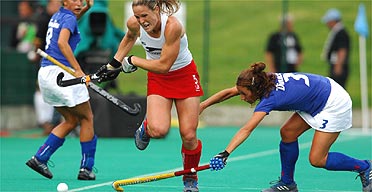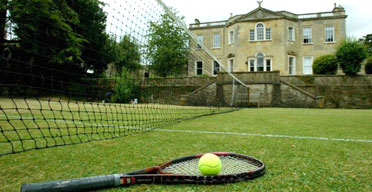Cardio fitness
Beach volleyball: Traditionally only two players on each team covering a 16m x 8m court. Plus it's played on sand, so you get a tough cardiovascular workout. A 10st person would burn about 535 calories an hour.
5 stars
Frisbee: In ultimate frisbee two teams of seven play on a 64m x 37m pitch (although you can make it smaller) and it requires fast bursts of running. A 10st person would burn about 450 calories an hour.
4 stars
Upper body
Beach volleyball: Powerful shots in particular, such as spikes (jumping and slamming the ball into the opposition's half), will build firm, strong arm, shoulder and back muscles.
4 stars
Frisbee: A well-executed throw relies more on perfecting the wrist flick, for perfect spin, than brute strength, but the stronger you are, the further it will fly.
3 stars
Lower body
Beach volleyball: The swift changes of direction and constant jumps (pros average about 85 an hour) will give taut core-stability muscles - the energy needed to jump on sand is greater than on a solid court.
5 stars
Frisbee: Involves fast changes of direction and plenty of leaping. With more players and a bigger pitch, it may be less intense than volleyball, but you'll benefit from running greater distances.
5 stars
Grey matter
Beach volleyball: The combination of split-second responses when receiving a powerful shot, or passing and attacking, make volleyball a great brain-booster which will seriously sharpen your reflexes.
4 stars
Frisbee: You're allowed 10 seconds before passing in Ultimate frisbee, but players tend to pass much faster, requiring speedy decisions. Catching while running develops excellent hand-eye coordination.
4 stars
Injuries
Beach volleyball: The most common injuries are hand and finger sprains from receiving the ball badly, but these are rare. Ankle injuries are fairly common in indoor volleyball, but are less likely when playing on sand.
4 stars
Frisbee: A non-contact sport but occasional contact happens. As in any sport that involves sudden stops (you're not allowed to run with the disc) and changes of direction, injuries such as muscle strains occur.
4 stars


